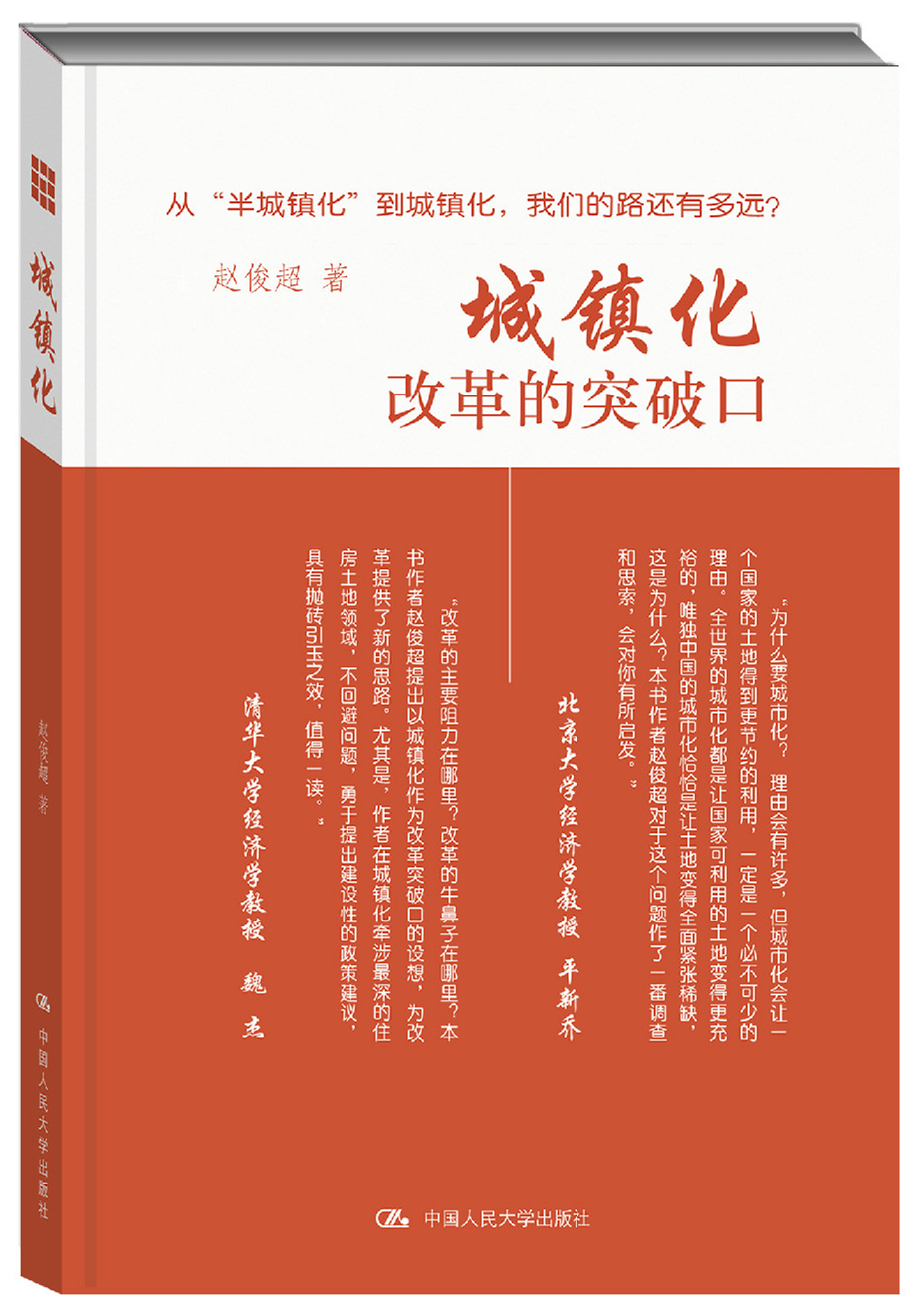Breakthrough point in China’s urbanization

Urbanization: Breakthrough Point of Reform
Author: Zhao Junchao
Publisher: China Renmin University Press
Chinese academics have come to the conclusion that urbanization is an inevitable part of modernization. However, there has been considerable controversy about the specific methods used to encourage urbanization.
Urbanization: Breakthrough Point of Reform probes into these disputes and difficulties, illuminating how urbanization can be achieved and accepted by all parties involved.
In the past, people’s understanding of urbanization tended to be shallow. Some town governments even equated urbanization with land requisition and reconstruction. Later, people came to realize that human interests are ultimately what lie at the core of urbanization. It is easy to build a city, but not that easy to encourage people to live in it.
One difficulty the urbanization process currently faces is that before the rural population came into cities, there was a mature, stable and closed urban community. Accommodating 270 million rural migrant workers in these established communities is a huge task.
Problems such as traffic jams and air pollution emerged in medium-sized and large cities along the eastern coast, and urban residents began to worry about urban expansion, environmental carrying capacity and the provision of public services. They became sensitive, and were thus inclined to reject migrant workers from rural areas, thinking that the influx would exacerbate the situation.
Considering the difficulties faced by migrant workers assimilating into big cities, some proposed that they could return to small and medium-sized towns. But these towns lack industrial support and cannot offer enough job opportunities.
However, Zhao Junchao pointed out that rather than flocking into the cities, the migrant workers are far less willing to move into the smaller cities as expected. They will not easily abandon their lifestyles unless there is an improvement in living standards. Given the level of welfare big cities can provide, they would rather stay where they are.
Therefore, the proper breakthrough point is more likely to be seen in the industrial towns along the eastern coast, including prefecture and county-level cities, along with economically powerful counties.
He outlines four reasons for this. First, these towns have good industrial bases and crave large amounts of labor. In fact, some of these coastal towns have already helped these workers settle down. Second, there are abundant public resources in these places. Problems such as resource scarcity and traffic jams have not occurred. There are bright prospects in terms of economies of scale. Third, as they have developed relatively quickly from rural areas, the people of these cities do not have the same sense of superiority toward migrants that exists among the citizens of more established cities. This means their ability to absorb migrants is stronger. Last but not least, most migrant workers are from younger generations with a higher education. They mainly engage in the stable manufacturing industries that allow them to settle down. This differs from the situation in the western regions where the unstable construction industry offers major job opportunities.
